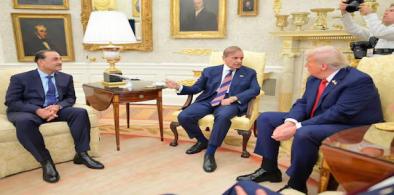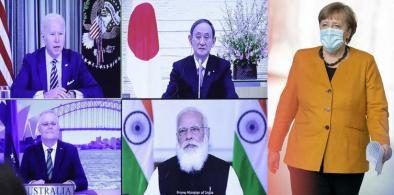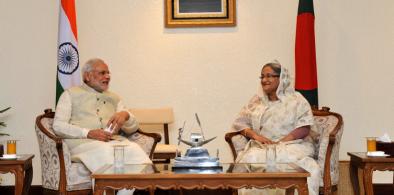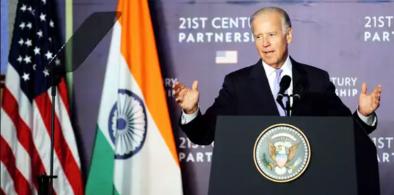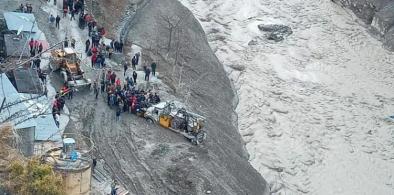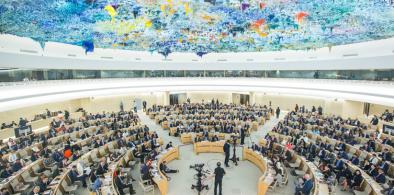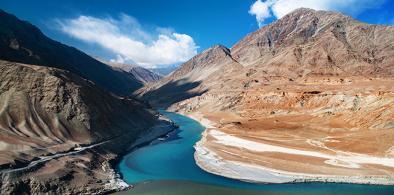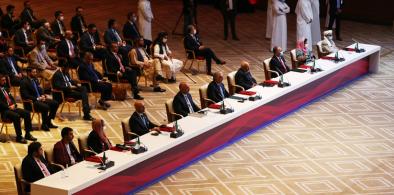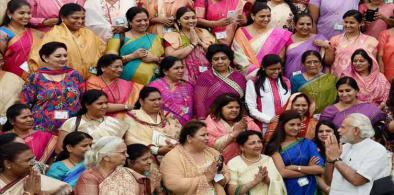The EU, part of the western alliance, can no longer remain a balancing power between America, the Quad and China, writes Amb Bhaswati Mukherjee (retd) for South Asia Monitor
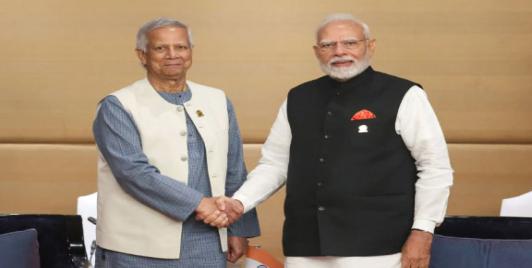
Bangladesh–India Relations at a Crossroads: Needed Recalibration, Not Rupture
The current strains in Bangladesh–India relations should therefore be seen not as an inevitable deterioration, but as a test of diplomatic maturity. Bangladesh and India share more than geography and history; they share a responsibility to ensure that temporary political frictions do not harden into structural mistrust. In a time of regional uncertainty, neither country benefits from a relationship defined by grievance or miscommunication.
A Dangerous Power Grab in Pakistan; Unpredictable Consequences For Region
The 27th Amendment, celebrated by its proponents as a security reform, is in reality a political coup executed through constitutional means. It marks not only Munir’s personal triumph but the institutional victory of the military over all other state authorities. As history warns, empowering any unelected institution above the republic’s elected will invites instability—not strength. Pakistan may soon discover that consolidating military power does not secure the nation’s future, but instead places it at greater risk
How Foreign Digital Influencers Are Tarnishing India’s Global Image
India must now transition from conventional soft-power thinking to visibility governance—the systematic management of how the country appears, circulates, and is emotionally interpreted across global platforms. Failure to do so will leave India’s global image increasingly shaped by commercial incentives outside Indian control.
Afghanistan Should Not Get Caught In The India-Pakistan Strategic Rivalry
The strengthening of Taliban-India ties runs counter to Pakistan’s interests. The more border clashes intensify between the Taliban and Pakistan, the more secure the Kashmir region and the Line of Control (LoC) become for India. Under such conditions, Pakistan will remain preoccupied with its northwestern border, giving India a unique opportunity to consolidate its control over Kashmir and potentially weaken, drive out, or eliminate Kashmiri militant groups
Instability in Nepal fuelling Terai autonomy movement
The Terai autonomy movement has been going on since 2007 and has recently gained traction with the armed outfit renewing its political vows at a time when Nepal is facing a host of internal issues, writes Shushant VC for South Asia Monitor
Modi’s catch-the-rain awareness campaign will help India conserve scarce water (World Water Day is on March 22)
Prime Minister Modi clearly laid out the importance of collective responsibility towards water conservation in February. He called for a 100-day campaign to clean up water bodies and prepare them for rainwater harvesting before the monsoon of 2021, writes Rajendra Shende for South Asia Monitor
Modi visit: Bangladeshi radicals cant derail the dynamism of growing India-Bangladesh ties
Regardless of the fundamentalist rhetoric on both sides of the border, the governments of Modi and Hasina are focused on improving connectivity, trade, and people-to-people relations, writes Subir Bhaumik for South Asia Monitor
Biden presidency will see a more collaborative Indo-US relationship
Biden has more India expertise than any previous president, which will only be a good thing for bilateral relations, writes Frank Islam for South Asia Monitor
Himalayan disasters: Urgent need for collaboration between India, Nepal and Bhutan
The Chamoli disaster should serve as an eye-opener for nations, government and individuals alike. In order to decrease the magnitude of such environmental disasters that occur or can occur in the coming future, it is necessary for the governments of India, Nepal, and Bhutan to collaborate in order to come up with sustainable solutions, writes Shushant V C for South Asia Monitor
UNHRC vote on Sri Lanka opens door for international intervention: Will India abandon role of regional power?
An international body to be provided with an opportunity to directly interfere in an internal affair of a member of the world community, especially a country in South Asia, will definitely dent the position of India as the regional power, writes Sugeeswara Senadhira for South Asia Monitor
Pakistan's once-mighty Indus, a lifeline for millions, is dying slowly
Hence, in the span of only one and a half-century, a mighty river like the Indus has been imprisoned in dams, bridges, and barrages, which has severely disturbed the river’s flow, writes Muhammad Abbas Khaskheli for South Asia Monitor
Seamless connectivity, clean-energy investment can herald new era of South Asian cooperation
By prioritizing green stimulus through clean-energy investment and sustainability-oriented policies in its pandemic response, South Asia can play an important role in making the development process more sustainable, both for the region and for the world, writes Partha Pratim Mitra for South Asia Monitor
For a peaceful South Asia, US acknowledges India's strategic importance to Afghanistan
The growing political and economic influence of India in Afghanistan has been factored by the Biden administration and the inclusion of India in the peace talks are proof of that, writes Shushant VC for South Asia Monitor
From security dialogue to leading the world: Quad summit Friday to discuss larger global role
The broader agenda signals the Quad's move towards multifaceted cooperation to broaden their footprint, while also keeping the facade -- important to India -- that it is not directed against China, writes Arul Louis for South Asia Monitor
India's new soft power: Pharmacy of the world
Gratitude has been expressed to India from the highest political levels of the 57-odd countries that have received 56 million doses through outright grants, commercially or through COVAX, writes N Chandra Mohan for South Asia Monitor
Manifold challenges faced by imprisoned transgender persons in South Asia
There are countries in South Asia, for example, India and Pakistan, where we have judgments from apex courts declaring self-determination of gender identity by trans people as fundamental to gender recognition, writes Sai Bourothu for South Asia Monitor
An icon of South Asia: Sahir Ludhianvi’s lifetime work and legacy still relevant
Sahir's birth centenary, on March 8, 2021, is an occasion for all to revisit his lifetime work and legacy that has tremendous relevance even in our own troubled, testing times, writes Venkat Parsa for South Asia Monitor
Justice for India's women: Against a bleak backdrop, some encouraging developments too
This is an ironic and familiar pattern wherein every March 8, the collective global attention briefly dwells on the status of women and while well-meaning statements are repeated – the substantive improvement in the welfare and safety of women remains a work in slow progress and an area of grave concern, writes Cmde C Uday Bhaskar (retd) for South Asia Monitor


